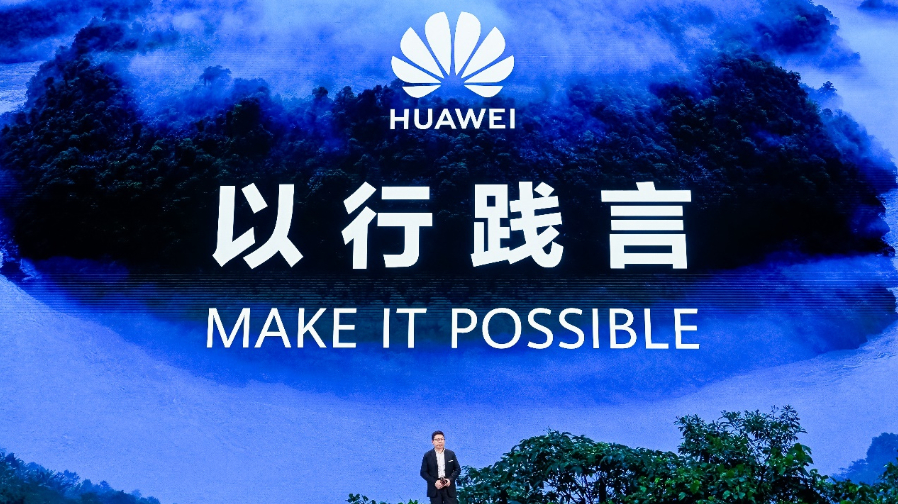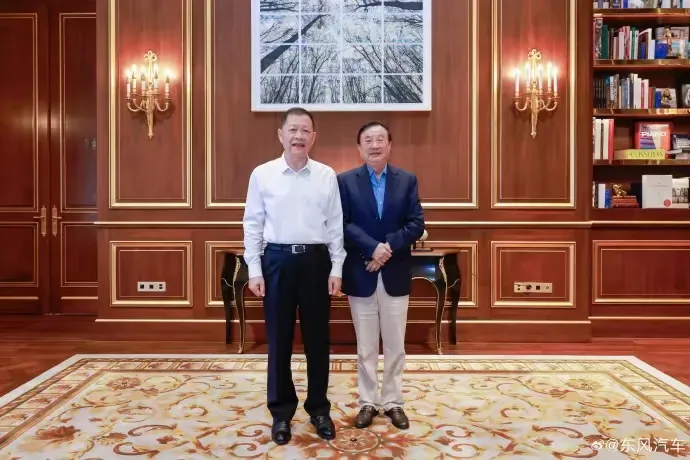
On September 10, under the blazing sun, Huawei held its annual brand ceremony in Shenzhen, where the on-site popularity was even hotter than the weather.
The KFC near Shenzhen Bay Sports Center was packed with people, not for food, but waiting to enter the launch event.
Even more crowded was the HarmonyOS intelligent mobility exhibition hall, filled with lively livestream hosts in front of the cameras, eager media reporters, frantic public relations professionals, and Huawei staff constrained by confidentiality agreements.

The reason everyone was gathered was for the extraordinary Huawei brand ceremony and the launch event for new HarmonyOS intelligent mobility products, specifically smartphones and cars.
Although Yu Chengdong, Huawei's Executive Director and Chairman of the Consumer Business Group, spent only half an hour introducing the world’s first commercially available tri-fold smartphone—Huawei Mate XT Extraordinary Master—the spotlight clearly fell more on the automotive side.
Despite the original price of the Huawei Mate XT Extraordinary Master being over 20,000 RMB, scalpers have driven its price up to more than 300,000 RMB, but that didn’t stop the crowd at the Huawei flagship store on East Nanjing Road from scrambling up the stairs to “snatch” one.
While securing one of these smartphones may not make someone a “master,” it certainly represents extraordinary luck.
In reality, the fervor surrounding Huawei smartphones appears to stem from the changes in trade relations between China and other countries. However, it is more attributable to their deep understanding of Chinese consumers and their leading edge in performance, intelligence, and design.
From this perspective, it is no coincidence that the vehicles that Huawei has been heavily involved in developing are selling well.
While the just-released AITO Wenjie M9 five-seater and the pre-sale of the Zhijie R7 may have taken a backseat to the Mate XT, the highlights presented by Yu Chengdong over the course of more than an hour are certainly worth mentioning.
The AITO Wenjie M9 five-seater comes in three models, with suggested retail prices ranging from 469,800 to 569,800 RMB. The M9 five-seater, featuring only two rows of seats, allows for a rear legroom extension of up to 1985mm. The interior of the M9 five-seater is equipped with high-quality Nappa leather and natural wood, and comes standard with Shuyun seats, which offer heating, ventilation, and massage functions. The second-row seats feature four-way electric adjustments and can recline by a maximum angle of 75°, while the backrest can recline by up to 43°.
In addition to the launch of the five-seater model, the M9 also welcomed six major intelligent upgrades.
In terms of lighting, the M9 is equipped with Huawei's million-pixel smart projection headlights, featuring dual-reflector lens technology to create ultra-close-range welcome projection effects. The upgrade adds VPD parking light language, so in VPD scenarios while parking, the smart projection headlights can project interactive light signals such as "Yielding" and "Waiting to Park," informing others of the vehicle's intentions and guiding pedestrians and other vehicles safely through.
Regarding the screen, the M9's AR-HUD has a 2K HD resolution, presenting a 75-inch large display area, with a fully upgraded UX interface for richer information display and more refined visual experiences. Additionally, the projection giant screen system has been upgraded; in parking scenarios, the front row seat position can adjust automatically and comes with a remote control, further enhancing operational convenience.

The HarmonyOS 4 system installed in the Harmony cabin is continuously upgraded, with a fully optimized control center interface, providing one-touch access to over 90% of commonly used features, and enhancing visual refinement. Supported by Huawei's Ark Engine, it enables innovative interaction methods for seamless integration across five screens: the passenger side screen, projection giant screen, central control screen, AR-HUD, and million-pixel smart projection headlights. It now allows for watching videos on the AR-HUD and playing games on the million-pixel smart projection headlights.
In terms of driving control, thanks to the exceptional performance of Huawei's Tongling platform and DriveONE intelligent electric drive system, the M9 now features a comfortable braking function that enhances everyday braking without nodding, frequent braking without motion sickness, and hill starts without shook discomfort.
The new owl U-turn mode allows for easy turns on icy, snowy, and gravel roads, further improving maneuverability in extremely tight spaces.
For safety, the M9 is equipped with a comprehensive collision avoidance system CAS 3.0. The forward AEB has been enhanced to recognize oncoming vehicles and crossing pedestrians and non-motorized vehicles within the lane, with newly introduced road surface adaptive AEB improving collision avoidance on wet, rainy, or snowy roads. The lateral active safety system has an enhanced automatic emergency avoidance feature eAES, allowing for maneuvering while braking; the rear active safety system adds recognition for child ride-on vehicles; along with deep anti-misstep acceleration pedal protection mechanisms, driving becomes safer.
The continuously upgraded HUAWEI ADS 3.0 applies an end-to-end innovative architecture using a PDP decision neural network for both pre-decision and planning to enhance experience limits; it also introduces an instinctual safety network to ensure baseline safety. Reports indicate that HUAWEI ADS 3.0 provides smoother following and gentler lane changes, capable of navigating nationwide roundabouts and parking spaces.
For parking, it supports auto-parking after selecting the target space upon arrival, allowing passengers to exit the vehicle, which then parks itself without needing to wait on-site. Based on a multi-element detection model with integrated perception, the M9 can accurately recognize curbs and other low obstacles, making parking assistance even smarter.
Outside of the AITO brand, the HarmonyOS intelligent mobility brand Zhijie R7 has officially launched pre-sales, starting at 268,000 RMB.
This vehicle will also feature HUAWEI ADS 3.0 end-to-end humanoid intelligent driving and a more advanced Harmony cabin 4.0, continuously evolving user experience. The car is equipped with 800V high-voltage fast charging and has a range of 802 km.

Zhijie is a brand co-created by Huawei and Chery; previously, its first model, the Zhijie S7, did not make a significant impact, so the R7 shoulders the crucial task of opening up the brand's market.
At the launch event, Yu Chengdong stated, "The Tesla Model Y is an excellent product with very strong sales in the pure electric SUV market. The goal for the Zhijie R7 is to surpass it and compete in a higher tier against the Tesla Model X."


